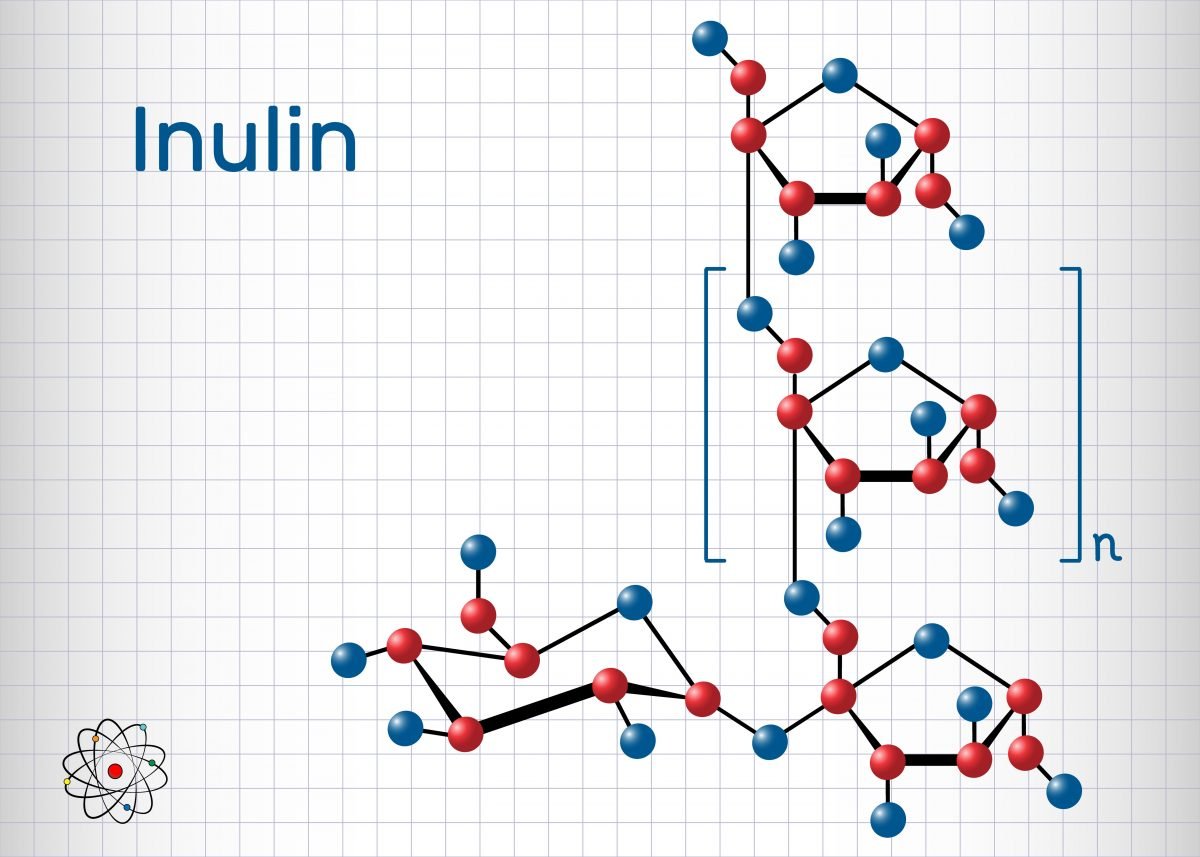Inulin and The Low FODMAP Diet
- Low FODMAP diet
Confused about inulin and the low FODMAP diet? I don’t blame you. Inulin is a less commonly known food ingredient that crops up on the low FODMAP diet, causing confusion.
In this article I am going to explain what inulin is and how it impacts your gut. I am also going to explain the FODMAP status of inulin.

What is inulin?
Inulin is a naturally-occurring prebiotic fiber that is indigestible by the small intestine due to lack of enzymes in the body needed to break it down.
When we eat inulin, it is broken down in the large bowel by our gut bacteria, in a process known as fermentation.
This process also produces short chain fatty acids which are thought to have a range of health benefits.
Although inulin is indigestible and so far only aids gut health, you might be thinking, what else would I need inulin for? Well, inulin aids in the absorption of two vital minerals in the body; calcium and magnesium. Inulin also supports bone health and immunity (1).
Want to see more about fibre and IBS? Be sure to check out this post: How Does Fibre Affect IBS?
But is Inulin FODMAP friendly?
So now you must be wondering, am I able to have inulin on a Low FODMAP diet? Unfortunately, inulin is not FODMAP friendly.
Inulin contains either oligosaccharides or polysaccharides (or both!). These are types of long-chain carbohydrates known as a fructan (2).
Why is inulin high FODMAP?
Fructans cannot be digested in the small intestine, so need to travel to the large intestine and colon. As inulin is indigestible, it acts as a prebiotic for bacteria in the gut to feed off of it.
In the slow process of breaking down inulin in the large intestine the gas produced from this process can lead to side-effects.
Experiencing bloating, stomach pain and distension, worsening symptoms of IBS (3). Inulin acts like a high FODMAP food item by causing symptoms as experienced in IBS (4, 5).
Why is inulin added to foods?
Even though inulin is known to cause gastrointestinal symptoms, inulin is still added to foods and dietary consumption is increasing.
So why is it added?
Inulin is often added to foods such as yoghurts due to its prebiotic nature, manufacturers can then claim that their product is ‘high in fibre’.
It also increases the foods sweetness, aids the texture of foods and a natural thickener (6).
Inulin is also added to food as it is naturally lower in calories, dense in fibre and naturally replaces fat and sugar in food (7).
Inulin in foods is typically added by extracting it from sucrose (sugar) or extracting it from chicory root, as chicory is ~15-20% inulin.
Nearly 30,000 plant species contain inulin, chicory being the most abundant source (8,9).
Inulin and food labels when on the FODMAP diet
Inulin is often hard to identify in the diet as food labels rarely include it! Look out for: chicory root, chicory root extract, and chicory root fibre on labels as these are alternative labelling identifiers.
Watch out! Some probiotics include chicory root or inulin. Whilst probiotics can relieve IBS symptoms in 50% of patients, it is worth checking the labels as this may have the opposite desired effect (10).
This also applies for an inulin based fibre supplement.
Some claims of ‘high fibre’ foods may state inulin on the label so it’s a good idea to check before purchasing.
Inulin low FODMAP foods
Below are some foods containing inulin, in brackets is the allowed portions as allowed per the Monash low FODMAP app (11, 4):
- Wheat products (74g pasta)
- Bananas (56g of a ripe banana)
- Chicory (75g of the leaves only)
- Cereals (e.g. 2 weetabix)
- Garlic (0g!)
- Granola bars
- Leek (38g)
- Onion (45g of pickled onions only)
- Some low-fat dairy products
However, inulin is tolerated in a small percentage of people or even in small amounts.
If you are on a low FODMAP diet and need to avoid inulin for the short-term, avoiding heavily processed foods and a small number of fruits and vegetables (as listed above!) will help you to achieve a low FODMAP diet.
A note on fibre
Whilst on the low FODMAP diet, we still want to ensure that fibre intake is still adequate but FODMAP friendly. Increasing fibre needs to be done slowly accompanied by drinking plenty of water.
Bottom line
Inulin is considered high FODMAP on the low FODMAP diet.
As recommended to eliminate as many fructans as possible during the first phase of the low FODMAP diet, you can slowly reintroduce fructans including inulin to determine your tolerance.
Article written by Camilla Donaldson Registered Dietitian